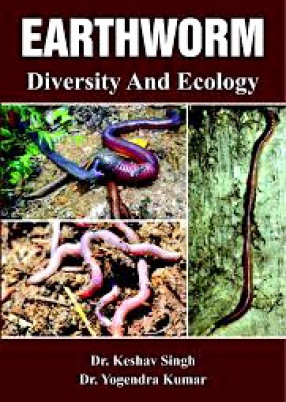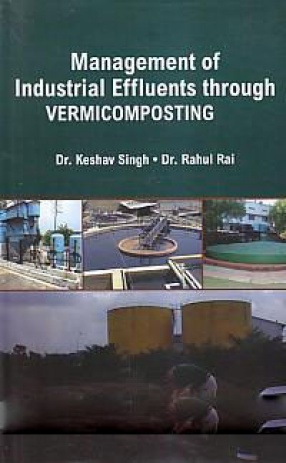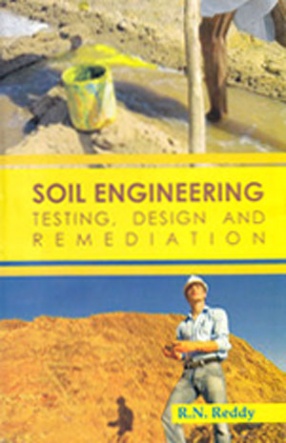
Gene-Tech Books

75 books

























The book of management of industrial effluents through vermicomposting is important for knowledge about wastes management and production of vermicompost as well as their effect on plants. This book is helpful to farmers whose particularly have interest in use of biofertilizers. It is our task to cover all information in this book. This book contains much more basic concept related to vermibiotechnology and agriculture not only for students and farmers but also ...



The book of Earthworm Diversity and Ecology is important for knowledge about the position of earthworms in different localities of Uttar Pradesh. This book will be helpful to farmers whose particularly have interest in production and use of vermicompost. It is our task to cover all information in this book. This book contains much more basic concept related to the earthworms and agriculture not only for students and farmers but also important for various entrance ...

This book has been designed as a manual which present an incisive look into the engineering principles of soil testing, design and remediation techniques which are increasingly being used in soil conservation practice. The text attempts to acquaint readers with the essentials of the subject even as it elaborates upon the challenges, issues and concerns associated with it, relating particularly to the care of various types of soils, and how they respond to the ...

As agriculture becomes increasingly mechanised, it becomes pertinent to consider not just the proper application of the best engineering technology to agriculture, but also its relevance, and agricultural process engineering provides a step in the right direction.The current text aims to delineate for the readers about what entails agricultural process engineering. Discussing its principles, concepts and practices, the book seeks to acquaint the reader with the ...

Today, the field of food technology and processing has become a well-established academic discipline, with food scientists and technologists constantly conducting active and productive food research and development programmes.This book has been written to cater to the needs of students of food science on a laboratory manual on food processing techniques. The text not only offers lucid, easy-to-follow content of experiments and processing techniques in food ...

Meat forms a considerable component of the diet of a large number of people around the world, especially in developed countries. With the outbreak of new diseases like bird flue, meat hygiene has come to gain immense prominence as a matter of utmost prominence among consumers nutritionists and food technologist. This book describes the numerous procedures, instruments and systems employed in the hygienic control of meat. For anybody who handles food as part of ...

Plant biodiversity is where an ecosystem in one area has an abundance of different plant species. These species must large trees to be a very biodiverse ecosystem. When an ecosystem is very biodiverse is allows for many more animal species to live and thrive there. Plant biodiversity has contributed in many ways to the development of human culture, and, in turn, human communities have played a major role in shaping the diversity of nature at the genetic, species, ...

This book has been written with the purpose of covering all biological and physical aspects of the postharvest physiology of fruits and vegetables. Assembling a substantial amount of information from a wide variety of sources, the book is a compilation of knowledge pertaining to postharvest technology of fruits and vegetables. It expands, in comprehensive detail, on technology relating to maturity determination, harvesting, packing, postarvest treatments, ...

Integrated farming utilizes cropping patterns which involve the raising of crops, animals, and or trees. A labour intensive integrated farming practice includes crops, duck, fish etc. on small-holdings, based on maximum recycling principles. With appropriate crop combinations and proper agronomic practices. integrated farming will not only increase grain yields and ensure economic returns, but it will also make available sufficient livestock feed and maintain ...

Farming is the art, science or practice of producing food, feed, fibre and many other desired goods by the systematic raising of plants and animals. Traditional systems of crops and livestock farming are not static. They adapt to changing circumstances such as increased population pressure, use of fertilizers and changing consumption patterns. farmers, governments, and national and international agencies all have a role in this change, often by keeping track of ...

Biotechnology in the food processing sector targets the selection and improvement of microorganisms with the objectives f improving process control, yields and efficiency as well as the quality, safety consistency of bioprocessed products. The application of biotechnology to food processing has been one of the most important and controversial recent developments in the food industry. Biotechnological research as applied to bioprocessing targets the development of ...

The introduction of biotechnology in every aspect of natural products research, has dramatically facilitated the potential applications by the industry today. Natural dyes, alternative food ingredients and preservation materials and microbial polysaccharides, are only some examples of the growing use of natural products in the industry. Importantly, the pharmaceutical sector is actively involved in natural products research, since a large number of novel ...
